‘I thank god for this beautiful country and for the balm it is to my spirit, which has been in the last two years so cut and torn and is now by his mercy receiving comfort and strength again,’ wrote Stokes from Kotgarh to his mother in America in a letter dated September 1913. Thank god over a hundred years later Kotgarh is still a beautiful country. Or thank Stokes?
Samuel Evans Stokes was an American missionary who worked in a leper home near Shimla for two years where the horrible death of a ward made him repudiate religion, forego scriptural zeal and head farther into the hills of Kotgarh in 1904. After a brief hermetic stint in a cave, he came out with a renewed vigour for life and all things alive – fell in love with a village belle and pursued her with ardour. Agnes gave in to the overtures and they eventually married in 1912. ‘It will interest you to know that I have taken to what I never thought would interest me even a little bit – gardening. Each morning – and early evening – I am out in my garden among my peas, beans, pumpkins and cabbages’ he wrote to his mother. Though Stokes took to farming initially to support his own growing family – the couple soon had three sons – helping other hill folks figured pretty high for him. As he wrote in another letter ‘One of the things I intend to do when in America is to go in for a selection of good wheat and grass seeds to introduce out here. If I can find anything which will yield the farmer a larger crop per acre, I shall be doing the people a very real service.’ And the ‘farmer of Kotgarh’ did just that by planting apple trees in his 200 acres in 1919; by 1925 the Stokes’ farm was the most bountiful in the region and gradually everybody embraced the crop. The Stokes’ farm still produces apples and is owned by the feisty veteran Congress MLA and descendant Vidya Stokes.
The whole of Kotgarh is one large apple orchard: overhanging, laden boughs obliterate low-lying boundary walls demarcating adjoining farms. Scant interest of locals in farming has led to the proliferation of labour from across the border – workers returning from farms late afternoon will make one think of countryside Nepal – Chitwan or Pokhara. Sprawling, palatial bungalows with elaborate arched entrances and large ornate windows, remnants of the Gothic architecture popularised by the British, stand stately sentinels by the roadside – orchards rise and dip into the mist all around you. The driveways leading to their gates and patios are victories of the four-wheel drive; right-angled sinuously at 45 degrees my friend’s humble hatch took a dent losing torque and slithering down. Alright, alright, i was driving. Many of these houses are homestays today and the hosts regale you with the wonderful histories and impossible stories and fill you up with the most delectable fare. The folks are just like the man Kipling’s ‘Lispeth’ – set in Kotgarh – finally gets married to – simple, honest and genuine. Here a man ran after my car for almost a kilometre because he wanted to correct the wrong direction he gave earlier.
If not the entire journey, most of the stretch to Kotgarh is as fascinatingly picturesque as the destination. You pass by Theog and Narkanda, which is 65 km from Shimla along the NH- 22 where conditions haven’t improved much since its days as the Hindustan – Tibet Road. Like in the rest of the state, here too the road is pot-holed up by the movement of heavy machinery by trucks running against time and tide to countless dam sites. Save for the juddering ride the views are splendid – the Sutlej shimmering like precious stones in disarray, the jagged titian mountains rising up like pine corns, the grey road peeling its way up viridian slopes. Once you reach Narkanda, there is a celestial convergence, a get-together of the skies, the woods and the blooms; the surrounds take on an ethereal dimension. Most of the roads in and around Narkanda are usable only during the spring and summer months. About eight km from Narkanda towards Thanedaar is the Tani Jubbar Lake – more a supersize pond than a lake – which is hemmed in by deodar trees. A temple built in a typical ‘Pahaadi’ – mountain – architecture – wooden lintels, flooring, carved plinths and arched roofs – stand solemnly on one end. The lake is fenced in with a green blot of a fence ostensibly to prevent tourists from bathing in the water. As dusk falls the gentle breeze comes like an eerie sough through the trees. Though Thanedaar used to be an important trading point during the days of trade with Tibet it was destroyed by a major fire during the 70s. A little further towards the ridge top of Thanedaar is Harmony Hall where Stokes lived. A private property, you will have to seek permission from the owners to look around.
The way to Hatu Peak, clearly marked and eight km from Narkanda, is narrow but scenic – through thick oak, pine and deodar trees blocking out the horizon on one side and extending till the horizon on the other. From every bend, from every angle, the vista was mesmerising. The deliquescence of the verdant treeline with the inky skyline was the stuff of dreams. We stopped not less than three or four times to take in the magnificence that floated all around us. Atop the Hatu Peak was a temple dedicated to Hatu Mata; the woodwork was getting the final coats of varnish under the supervision of the priest who had just finished his ablutions. There was a smattering of locals – families on pilgrimage followed by picnic. A small path leads to the topmost point in the ridge from where you can actually raise your hands to touch the skies or the heavens swoosh down for an embrace. At least the vultures swoop down. Local lore has it that before the British came establishing Shimla as their summer capital, the region was under the Gorkhas who built a fort atop these hills. Save for some rocky outcrops that might have doubled up as bastions there is nothing left of it today.
Kotgarh itself is a pleasant 12 km from Narkanda; but be forewarned about local cabbies who have an unpleasant habit of ramming around corners at breakneck speeds and jamming on their brakes right in front of you – on your lane. The road to the historic Gorton Mission and St Mary’s church – a couple of kilometres from Kotgarh town – has many severe dips and sudden lurches bound to burn your rubber. Some mountain driving tips might come in handy here. The Gorton Mission School, established in 1843 by Christian missionaries, is believed to be the oldest school in Asia – a three-storied building made of yellow bricks, it abutted a basketball court and a playground. Smartly uniformed little boys and girls were grudgingly engaged in warm up exercises probably before a game on that frosty morning. A hop-skip away was the famous St Mary’s church where Stokes and Agnes got married. Built in 1883, it is evident from the fluffy exteriors that several layers of repair had gone beneath it. With stone slab roofs and freshly polished wooden spires, the charming church painted yellow – probably in conformity with the nearby Gorton Mission – was tucked into the hedges of an untended flower garden and an orchard. The pastor came out holding a brackish steaming liquid in a stein and offered us some. He was writing a book on ‘the farmer’ he said.
The years he spent in a nearby cave as an ascetic would be the crux; from where Samuel Stokes emerged as Satyanand Stokes.


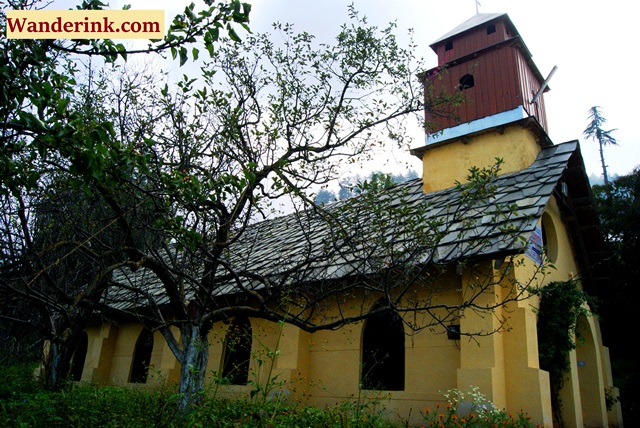
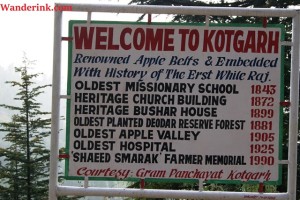
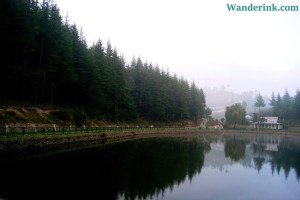
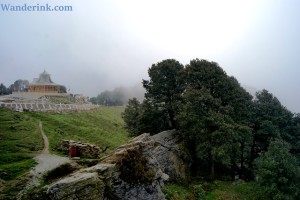
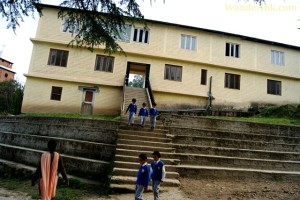
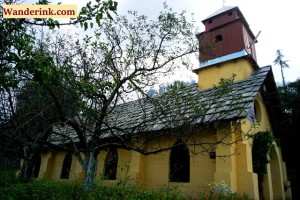









This place looks inviting , beautiful pictures 🙂
Inviting place = beautiful pictures 🙂
I agree…this is a delightful slice of rural Himachal. I quite understand how these parts can bloom the latent agriculturist in the most unlikely sorts. Thank you, Stokes.
Right you are…more than thank god, thank Stokes. 🙂
One man who made a difference, it is one man who can make a difference. Every town (village) needs a Stokes. Thanks Thommen for showing us one.
Pardon the philo-bent but who was Stokes…just another guy like you and me! You get the drift…